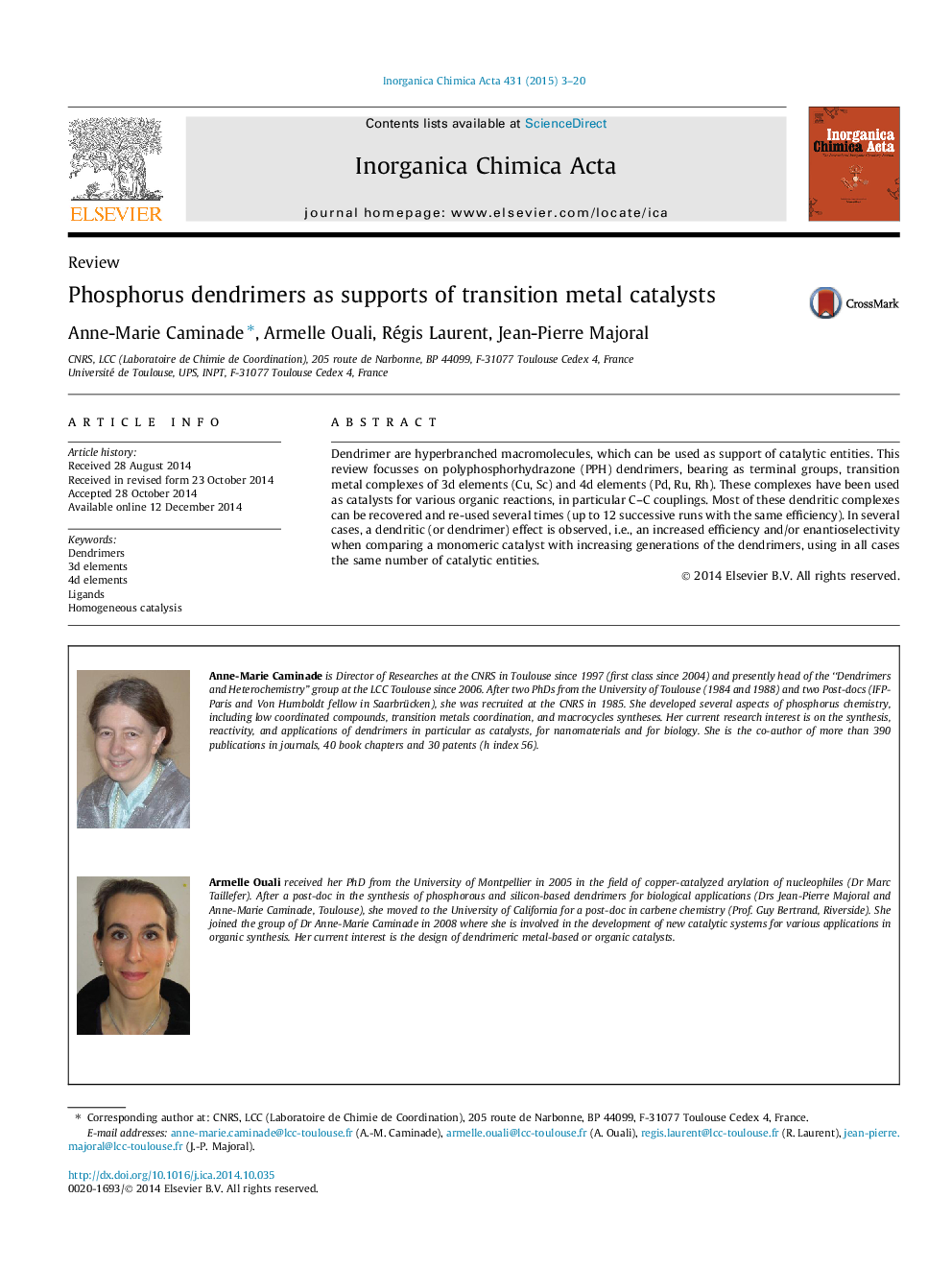| Article ID | Journal | Published Year | Pages | File Type |
|---|---|---|---|---|
| 1307926 | Inorganica Chimica Acta | 2015 | 18 Pages |
•Synthesis of dendrimers bearing transition metal complexes as terminal groups.•The dendritic complexes have been used as catalysts for various organic reactions.•The dendritic complexes can be recovered and re-used several times.•An increased efficiency when the size of the dendrimer increases can be observed.
Dendrimer are hyperbranched macromolecules, which can be used as support of catalytic entities. This review focusses on polyphosphorhydrazone (PPH) dendrimers, bearing as terminal groups, transition metal complexes of 3d elements (Cu, Sc) and 4d elements (Pd, Ru, Rh). These complexes have been used as catalysts for various organic reactions, in particular C–C couplings. Most of these dendritic complexes can be recovered and re-used several times (up to 12 successive runs with the same efficiency). In several cases, a dendritic (or dendrimer) effect is observed, i.e., an increased efficiency and/or enantioselectivity when comparing a monomeric catalyst with increasing generations of the dendrimers, using in all cases the same number of catalytic entities.
Graphical abstractDendrimer are used as support of catalytic entities. This review focusses on polyphosphorhydrazone (PPH) dendrimers, bearing as terminal groups, transition metal complexes of 3d elements (Cu, Sc) and 4d elements (Pd, Ru, Rh). Most of these dendritic complexes can be recovered and re-used several times as efficient catalysts.Figure optionsDownload full-size imageDownload as PowerPoint slide
